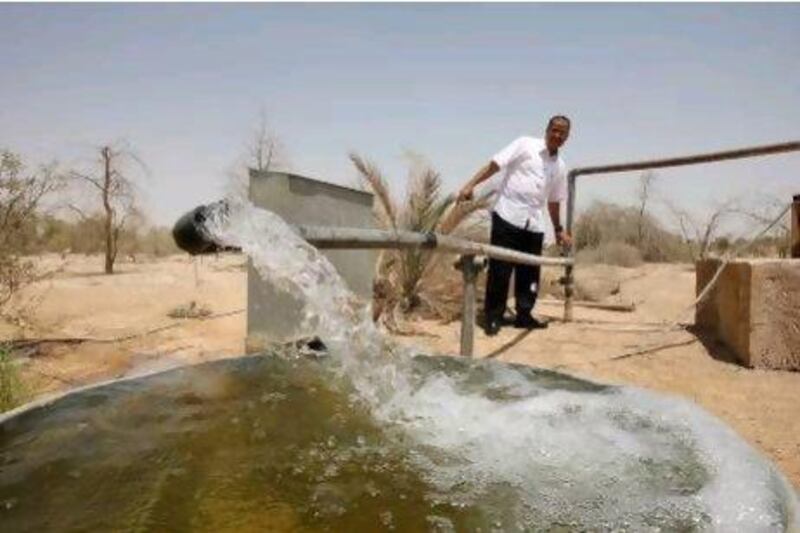AL AIN // Researchers fear rising water tables in parts of Al Ain may be undermining the foundations of some buildings.
A study by the UAE University was conducted in an Al Ain valley, where researchers used seismic and other equipment to look for places in which groundwater volumes may need replenishing.
It found that in some areas the water table was as close as five metres to the surface.
"We found the fluctuation in water tables that might affect the buildings because the water stays and will produce surface water," said Dr Ahmed Murad, associate professor of hydrogeology at the university's faculty of sciences.
"This is unusual to find the surface water like this [in the desert]. The groundwater rise may have a negative effects on the foundations and may cause subsurface caving, subsidence or any collapse within the constructions."
Groundwater can be replenished through natural sources such as rain or, in this case, from the nearby Lake Mubazarrah and run-off from the mountains.
It can also be topped up through artificial methods, which include rerouting rainwater or reclaimed water to the tables.
The study recommended that water levels be measured every six months or annually.
"The reason is to inform the public and to protect residential areas from any gradual or sudden uplift of the groundwater level which may greatly affect the building foundations in the area," Dr Murad said.
He said drilling new groundwater wells or building sources to replenish the tables should be regulated.
"In order to improve, you need to pump this water and you need to test the quality of the water," Dr Murad said. "If you find it in good quality you can recharge it into the groundwater of the area."
He led a team of six researchers, assisted by five UAE University students. The study began in October last year and ended in June.
"We have done the study in different farms, water wells and houses in that area," Dr Murad said. "During the study we also tested around 12 water wells in the area, which showed water table surprising up. We found in these wells that the water table rose to 10 to 15 metres."
Several years ago the water table in the same area was quite low, between 20 and 30 metres below the surface.
Dr Murad said his team discovered the table volumes were rising only after the study, and did not have any records on which to rely.





